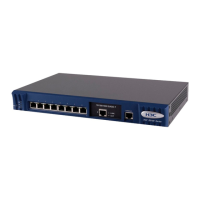Operation Manual – MSTP
H3C S3100 Series Ethernet Switches Chapter 1 MSTP Configuration
1-23
Diameter of the Switched Network” and 1.3.9 “Configuring the MSTP Time-related
Parameters
” for information about the network diameter parameter and the hello time
parameter.
Note:
z You can configure a switch as the root bridges of multiple spanning tree instances.
But you cannot configure two or more root bridges for one spanning tree instance.
So, do not configure root bridges for the same spanning tree instance on two or
more switches using the stp root primary command.
z You can configure multiple secondary root bridges for one spanning tree instance.
That is, you can configure secondary root bridges for the same spanning tree
instance on two or more switches using the stp root secondary command.
z You can also configure the current switch as the root bridge by setting the priority of
the switch to 0. Note that once a switch is configured as the root bridge or a
secondary root bridge, its priority cannot be modified.
III. Configuration example
# Configure the current switch as the root bridge of spanning tree instance 1 and a
secondary root bridge of spanning tree instance 2.
<Sysname> system-view
[Sysname] stp instance 1 root primary
[Sysname] stp instance 2 root secondary
1.3.4 Configuring the Bridge Priority of the Current Switch
Root bridges are selected according to the bridge priorities of switches. You can make
a specific switch be selected as a root bridge by setting a lower bridge priority for the
switch. An MSTP-enabled switch can have different bridge priorities in different
spanning tree instances.
I. Configuration procedure
Table 1-11 Configure the bridge priority of the current switch
Operation Command Description
Enter system view
system-view
—
Set the bridge priority for
the current switch
stp [ instance
instance-id ] priority
priority
Required
The default bridge priority
of a switch is 32,768.

